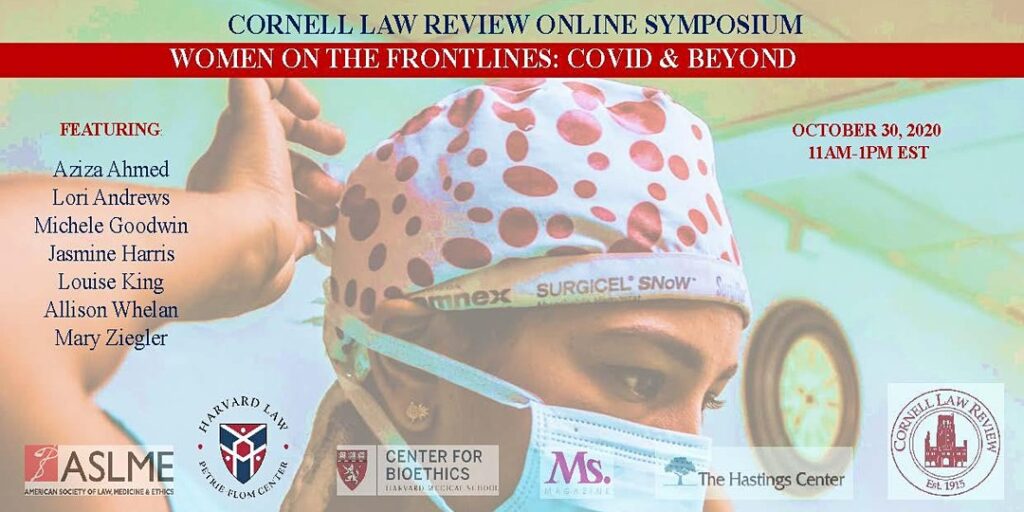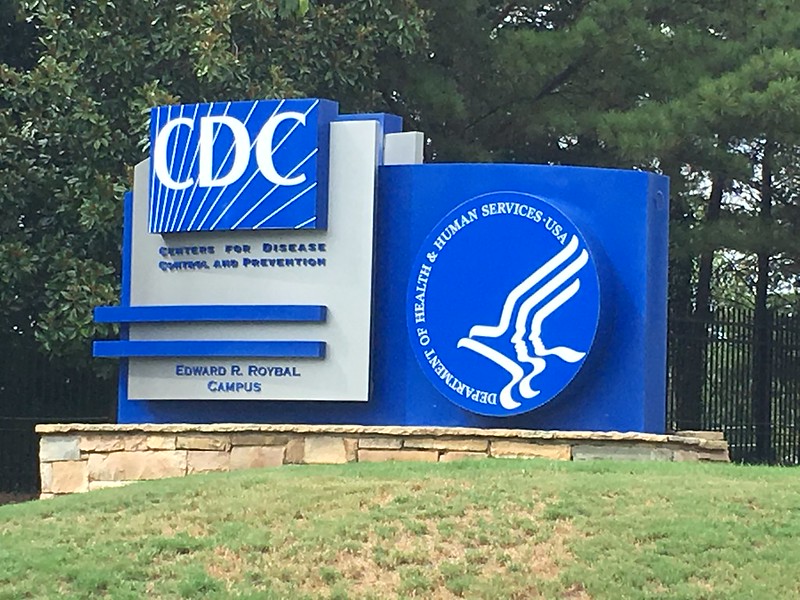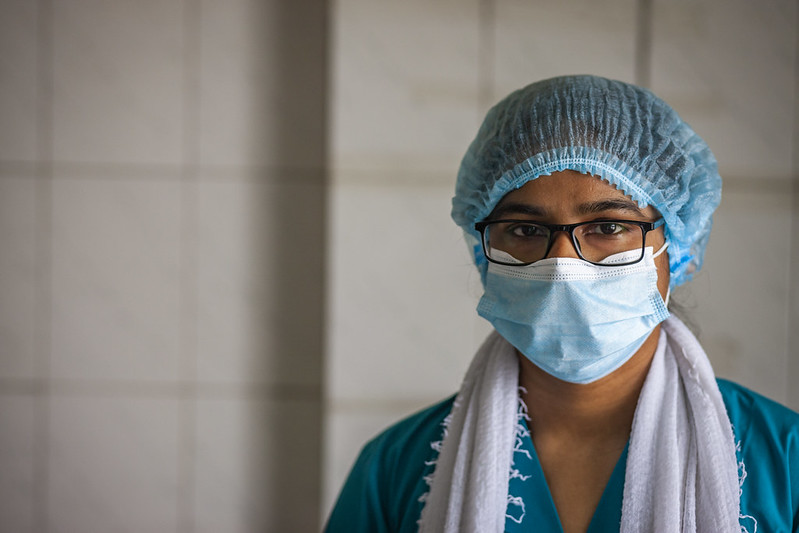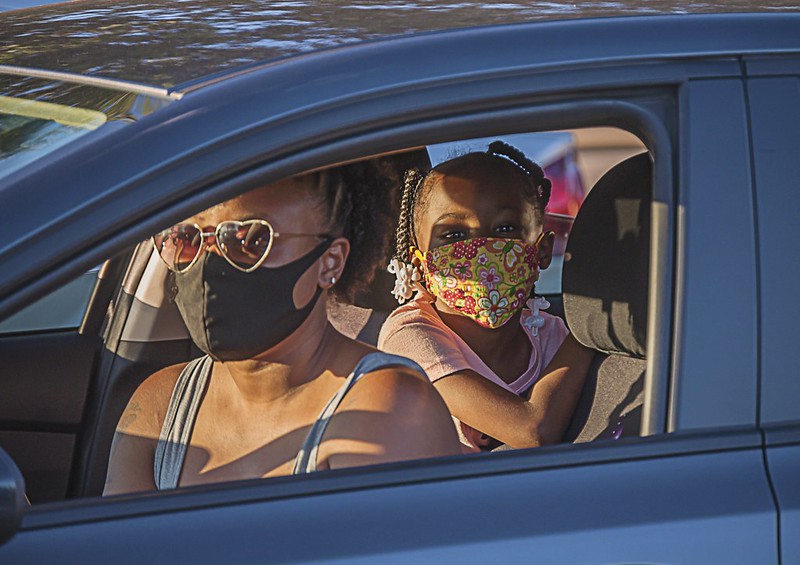The question of the role of politics in the administration of disease response had been front and center in the response to the COVID-19 pandemic from the virus’s early spread.

This piece is part of “Women on the Frontlines: COVID and Beyond,” an online symposium examining the political, economic, social and legal status of women.
Sponsored by the Cornell Law Review with the Center for Biotechnology and Global Health Policy and co-hosted by Ms. and others, the symposium brings to light the ways women labor and lead at the forefront of society, constituting the foundation of essential workers, and performing critical services from child to medical care. But during the pandemic, women (especially women of color) suffer persistent economic constraints; health and death disparities; obstruction of rights; and the troubling perceptions of expendability. Watch “Women on the Frontlines: COVID and Beyond” for a discourse about the role of women and pathways toward a more just society.
In September, as the COVID-19 pandemic neared 200,000 deaths, legislators were growing increasingly concerned by ongoing attempts of the Trump administration to interfere with the work of government health agencies.
So on Sept. 23, the heads of the Centers for Disease Control (CDC), the National Institutes for Allergy and Infectious Disease, and the Food and Drug Administration (FDA) were called to testify before the Senate Health, Education, Labor and Pensions Committee on the response to the pandemic—and a key area of questioning was about political meddling in the scientific response to the epidemic.
Then, just last week, at the request of Senate Democrats, the Government Accountability Office (the U.S. government’s independent watchdog) agreed to “conduct an investigation of the Trump [a]dministration’s political interference at the CDC and the FDA, and to determine whether this interference has violated the agencies’ scientific integrity and communication policies.”

The question of the role of politics in the administration of disease response had been front and center in the response to the COVID-19 pandemic from the virus’s early spread.
Concerns began with President Trump’s misleading statements about COVID-19, placing millions of Americans at risk of contracting the virus. In highly publicized events, the Trump administration also sought to alter CDC guidance against the best evidence at the time.
In response to the questioning by legislators, heads of agencies and departments, including Robert Redfield, Director of the CDC, argued that they would do their best to protect the organization from political interference.
This framing—in which the CDC is operating best when untouched by politics—hides the reality: The CDC has always been an agency shaped by the ebb and flow of social, political and economic influence from politicians, activists and the executive branch. The CDC, in other words, is situated in political and social context.
This is not to say that facts don’t matter. They do. The CDC is guided by its core practices of epidemiological research to understand disease, provide guidance to communities, and publish information about health issues.
Yet, understanding the CDC as an agency that comes from politics and society—and is not simply a reflection of what is in the world of disease and health—is necessary to understand the consequences of the agency’s actions.
CDC Politicking Has Life and Death Consequences—Especially for Poor Women of Color
Understanding this matters now more than ever: The CDC as an agency subject to outside influence reveals how its guidance and the protective measures offered by the agency’s public health messages do not apply equally across the population. Some people win, while others lose. In the case of COVID, these losses can be deadly.
We can demand change because the CDC is not hermetically sealed. The agency must do better.
The CDC’s public health guidance, in turn, becomes a site of political reckoning: a place to advocate to ensure that communities are protected from the pragmatic decisions that will be the outcome of listening to a guidance document, from reopening schools to accessing testing.
While many died from COVID and the pandemic’s impact has not been restricted to one racial group, communities have experienced the pandemic differently. At any given point and time, the CDC guidance produces different consequences for different groups of people.
Some people were able to just work from home and shelter from the virus. But for others, particularly the poor, the epidemic produced financial ruin as business closures caused unemployment numbers to skyrocket creating a cascade effect resulting in housing insecurity through evictions. This had grave impact on women of color, primarily Black and Latinx, many who work in the service industry. This resulted in financial instability for women of color—especially in homes where women were the primary breadwinner.

Even where women of color remained employed—it was often their employment in essential services that placed them at risk of contracting COVID-19. Many of these jobs are traditional health care settings, from nursing assistants to medical assistants, in which approximately 45-50 percent of the labor force is made up by women of color. In these settings, exposure to the coronavirus placed health care workers in danger.
Increased engagement with the gig economy and in sectors like agricultural work also placed workers at risk as they fulfilled the needs of those who were lucky enough to stay at home.
For Latinx workers, meatpacking plants became hotspots early in the pandemic placing thousands of workers at risk. Eighty-seven percent of the people infected with COVID-19 in meatpacking plants were racial minorities.
Households themselves tragically proved to be risky environments where conditions are crowded and multiple generations reside together. As a recent study in the Journal of the American Medical Association utilized data from the universal testing of pregnant women in New York City to find that the built environment measured by household membership, household crowding (greater than on person per room) and low socioeconomic status were associated with a higher prevalence of COVID-19.

The combination of housing conditions and being as an essential worker has now also been directly connected to the vulnerability of children contracting coronavirus. Black and Latinx children are dying at higher rates in the pandemic. This can be explained, as the CDC notes in the Mortality and Morbidity Weekly, that essential workers at higher risk for exposure and a higher risk of intra-household transmission.
But what about health care? African-American and Hispanic-Americans are less likely to be insured than other race groups. In 2013, around 40 percent of Hispanics and 25 percent of Black Americans were uninsured—compared to 15 percent of white Americans. Over the last several years, Latino and Black children top the charts respectively for losing health insurance.
Latino children, in particular, have been impacted by the Trump administration’s public charge rule which will take into consideration an immigrants use of public benefits for over 12 months when determining admissibility for the individual.
This could mean that individuals are less likely to seek out health services when needed not only for a potential coronavirus infection but for the underlying conditions that exacerbate COVID.
And, when people do seek out services, they must contend with health discrimination the clinical setting which contributes to an ongoing sense of distrust in the medical system. Discrimination that contributes to a related issue of access—a basic level of trust in the health care system.
Acknowledging these structural determinants might change the nature of CDC guidance. It would incentivize the CDC to demand that when we protect ourselves from disease we also begin to remedy these underlying causes of vulnerability to illness.
Demanding that, however, requires seeing the CDC as an institution willing to transform itself.
You may also like:





